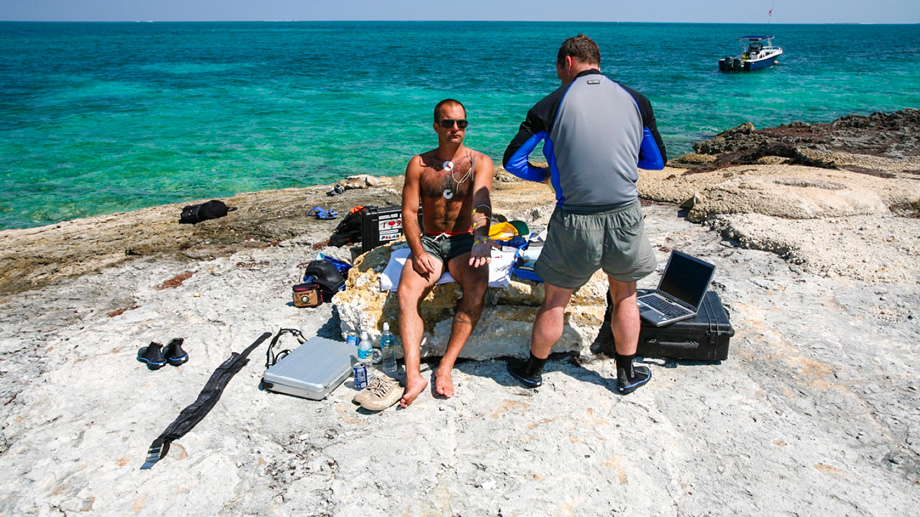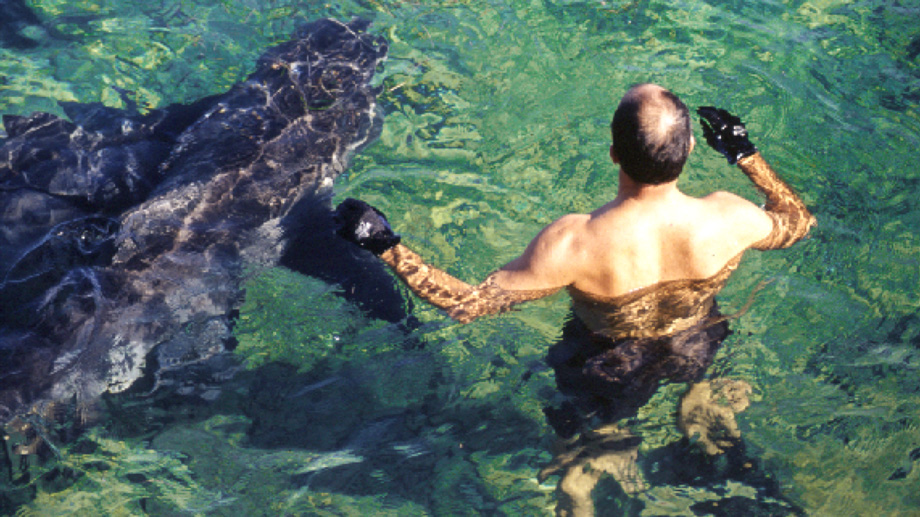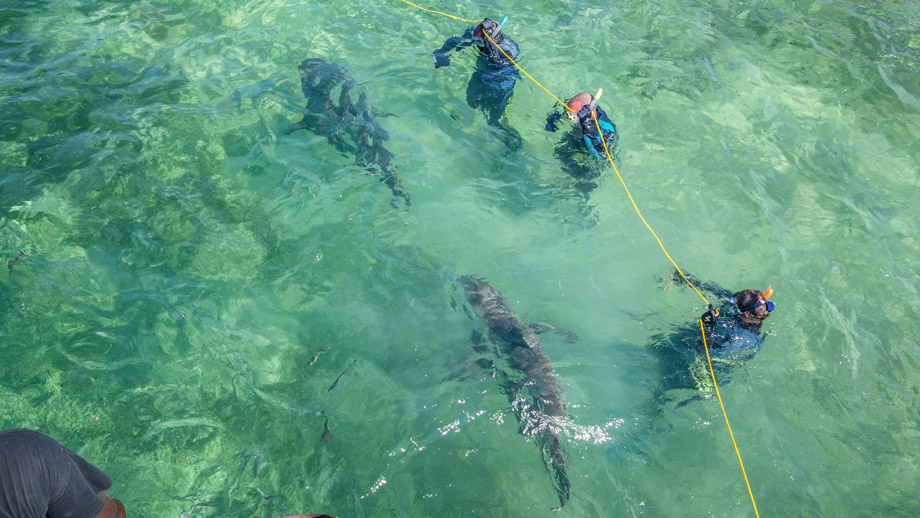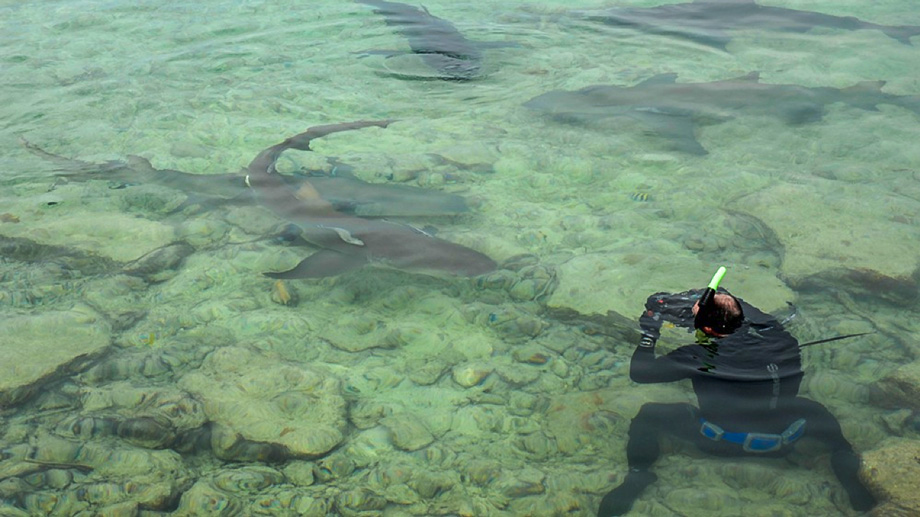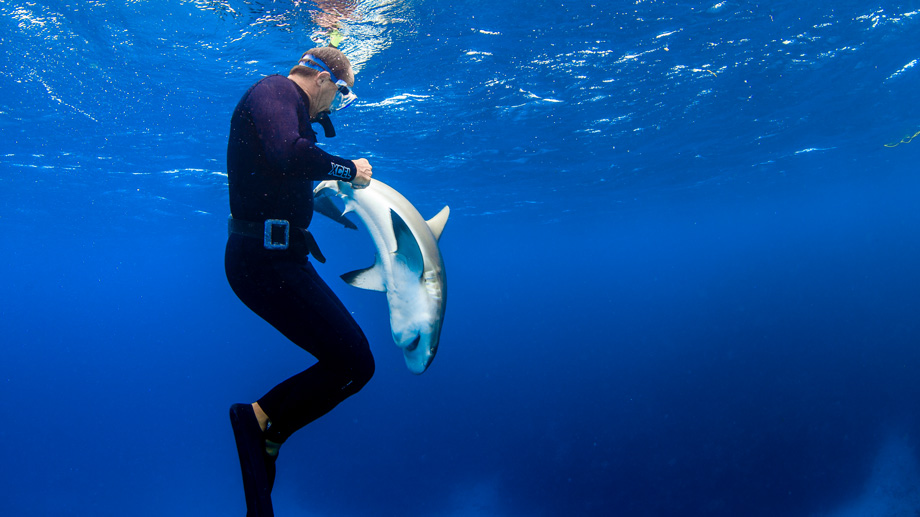Erich's Background
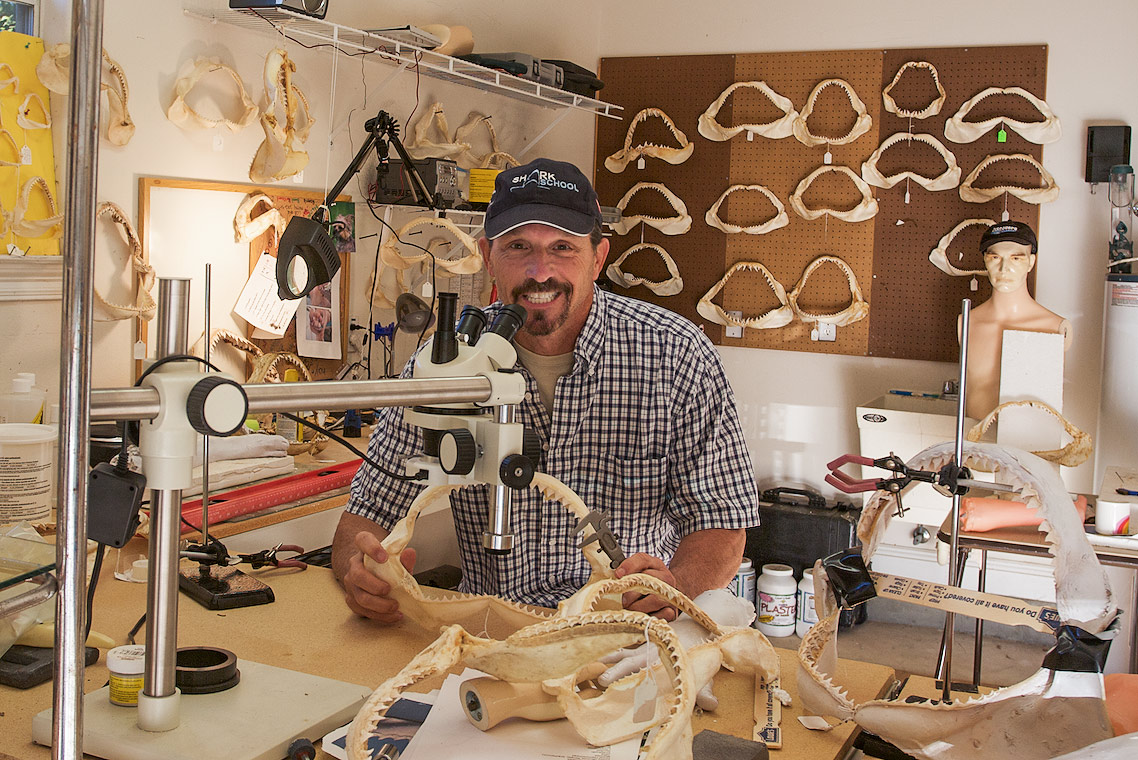
Erich's Sharkschool®
Erich is the head of the SharkSchool®, an organization that teaches divers, snorkelers, rescue swimmers, and others how to interact with sharks, what to look for when entering the water and most importantly how to feel safe among sharks. He functions as a case investigator of the shark research institute's GSAF (Global Shark Attack File). He is the chairman of SAVN™, the SHARK ACCIDENT VICTIM NETWORK, a non-profit organization to help shark victims. Erich has given lectures worldwide and has been a guest on many TV shows in the US and abroad. His publications and books found a worldwide audience.
Erich's latest project is the creation of SharkSchool® Teaching, an organization based in Switzerland that trains and educates shark enthusiasts of all walks of life to help teach kids, teens, and adults, about sharks and their importance to our planet.
Body language of Sharks
Erich's primary expertise is the body language of sharks, with a particular interest in shark accidents and their causes. Many of the old theories of why sharks bite humans have been erased through his experiments and new ideas proposed. He is the only shark expert to recreate many of the typical accident scenarios with the individual species. His understanding of potential reasons for shark accidents opened new doors in this field of research.
Erich is considered the top authority and pioneer in shark-human interaction. He developed the first shark-human interaction concept ADORE-SANE for swimmers, divers and snorkelers that allows safe interacting with any shark species under different conditions. He has spent the last twenty-five years collecting data from different shark species around the world. Besides some reef species, his main focus is on Caribbean reef sharks, blacktips, lemons, tigers, oceanic whitetips and white sharks.
Some of Erich's scientific publications (2011 on):
Amin, R, Ritter, E. & M. Richardson (2020). The potential impact of the erroneous categorization of shark bites on incident modeling. Journal of Marine Biology and Oceanography. In press.
Ritter, E. (2020) Is the shark just drifting or does it take a quick nap? Open Journal of Animal Sciences. 20(1).
Ritter, E. (2019) Does lowering pectoral fin lowering actually reflect a human-oriented threat display. Examines in Marine Biology and Oceangraphy. In press.
Amin, R., Ritter, E. & B. Bonell (2019). Using human population numbers to compare the incidence of shark bite on the east and west coasts of Florida. Florida Naturalist. In press.
Ritter, E. (2019). Characterization of blacktip shark feeding apparatus injuries due to hook ripping. Journal of Marine Biology and Oceanography. In press.
Ritter, E., Amin, R., Cahn, K. & J. Lee (2019). Against common assumptions: the world’s shark bite rates are decreasing. Journal of Marine Biology. In press.
Ritter, E. & R. Amin (2019). Mating scars among sharks: evidence of coercive mating? Acta Ethologica. 22(1), 9-16.
Ritter, E. (2018). From mutualistic partner to hunted prey? Open Journal of Animal Sciences. 9, 88-96.
Ritter, E. & A. Munoz (2018). How to kill another shark: A first inside look at a potential hunting strategy of a Galapagos shark. Open Fish Science Journal. 11(1).
Ritter, E. (2018). The relationship between digestive gases and buoyancy in sharks. Journal of Behavior. In press.
Ritter, E., & A. Dellios (2018). On the separation mechanism between a shark's tooth and its jaw base, with special emphasis on an observation made from a white shark, Carcharodon carcharias. Open Journal of Animal Sciences. 8(3), 329.
Amin, R., Ritter, E. & B. Bonell (2018). Shark bite rates along the US Gulf coast: a first investigation. Environmental Sciences. 6(1), 1-12.
Isci, E. T. & E. Ritter (2018). On the complexity of shark bite wounds: from the onset of infection to the consideration of cosmesis. Journal of Trauma and Acute Care Surgery. Accepted.
Isci, E. T. & E. Ritter (2017). Comment on clinical features of 27 shark attack cases on La Reunion Island. Journal of Trauma and Acute Care Surgery. DOI: 10.1097/TA.0000000000001669
Ritter, E. & R. Amin (2017). The importance of academic research in the field of shark-human interactions: A three-pronged approach to a better understanding of shark encounters. In: Chondrichthyes. L. F. da Silva Rodrigues Filho and J. B. de Luna Sales (eds). InTech, Rijeka, Croatia, 63-80.
Amin, R., Ritter, E., Kulldorf, M., Barbas, A. & M. Schwarzmeier (2016). Sharksuckers, Echeneis naucrates, are non-randomly attached to the bodies of lemon sharks, Negaprion brevirostris: A spatial study. Environmental Sciences, 4 (1), 79–93.
Ritter, E. K. & A. Quester (2016). Do white shark bites on surfers reflect their attack strategies on pinnipeds? Journal of Marine Biology, http://dx.doi.org/10.1155/2016/9539010
Ritter, E. K. & R. Amin (2016). Mouth cleaning of lemon sharks, Negaprion brevirostris, by sharksuckers, Echeneis naucrates. Copeia, 104(3), 728–733.
Ritter, E. K. & R. Amin (2015). A study of stealth behavior in the proximity of divers. Open Journal of Animal Sciences, 5 (2), 224–228.
Ritter, E. K. & F. Vargas (2015). On mating behavior of the blotched fantail ray, Taeniura meyeni. Environmental Sciences, http://www.m-hikari.com/es/es2015/es1-2015/4117.html
Levine, M., Collier, R. S., Ritter, E., Fouda, M. & V. Canabal (2014). Shark cognition and a human mediated driver of a spate of shark attacks. Open Journal of Animal Sciences, doi: 10.4236/ojas.2014.45033
Unger, R., Ritter, E., Osiyemi, O. & J. Goodman (2014). Antibiotic susceptibilities of bacteria isolated within the oral flora of Florida blacktip sharks: guidance for empiric antibiotic therapy. PlosOne. doi: 10.1371/journal.pone.0104577.
Amin, R., Ritter, E. & A. Wetzel (2014). An estimation of shark attack risk for the North and South Carolina coast line. Journal of Coastal Research, 31(5), 1253–1259.
Bentz, J., Dearden, P., Ritter, E. & H. Calado (2014). Shark diving in the Azores: challenge and opportunity. Tourism in Marine Environments, 10, 71–83.
Ritter, E. (2014). Coasting of pelagic thresher sharks, Alopias pelagicus, in comparison to two other species of the same ecomorphotype, and the limitation of video capturing in natural settings. Environmental Sciences, 2(1), 13–23.
Ritter, E. & R. Amin (2014). Are Caribbean reef sharks, Carcharhinus perezi, able to perceive human body orientation? Animal Cognition 17, 745–753.
Ritter, E. & L. J. V. Compagno (2013). First record of a smalltooth sandtiger shark, Odontaspis ferox (Risso, 1910), from the Galápagos Islands. Marine Biodiversity Records. doi:10.1017/S1755267213001115; Vol. 6; e130.
Ritter, E., Amin, R. & A. Zambesi (2013). Do lunar cycles influence shark attacks? Open Fish Science Journal, 6, 71–74.
Amin, R., Ritter, E. & L. Cossette (2013). An investigation of shark density and attack rates in California. Journal of Environment and Ecology, http://dx.doi.org/10.5296/jee.v3i1.2700.
Ritter, E. & L. J. V. Compagno (2013). Clasper flaring: maintenance behavior, or a normally hidden feature of male whitetip reef sharks, Triaenodon obesus? Open Fish Science Journal, 6, 10–12.
Ritter, E. K. (2012). A rare use of a shark’s pectoral fin? Scooping off a sharksucker from the flank. Open Fish Science Journal, 5, 57–59.
Ritter, E. K. & Amin, R. W. (2012). Effect of human body position on the swimming behavior of bull sharks, Carcharhinus leucas. Society and Animals, 20, 225–235.
Amin, R., Ritter, E. & P. Kennedy (2012). A geospatial analysis of shark attack rates for the east coast of Florida: 1994-2009. Marine and Freshwater Behaviour and Physiology 45 (3), 185–198.
Ritter, E. (2011). Use of sand ripples to enhance chafing in Caribbean reef sharks (Carcharhinus perezi) and blacktip sharks (Carcharhinus limbatus). Bulletin of Marine Science 87(3), 413–419.
